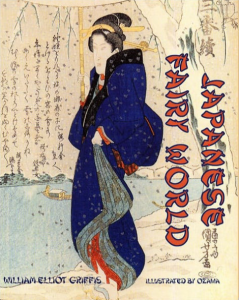Original 1874 Edition of Mikado’s Empire
In 1874, after living in Japan for almost five years, Griffis and his sister Margaret began their voyage back to the United States. It is during this time that Griffis would round-out his career, becoming a lecturer and prolific writer. Shortly after his return, Griffis marries Katherine Stanton and they have two children together. As he grew his family, Griffis also continued his theological education, earning the title Doctor of Divinity from Union College. In 1899 he also received an honorary degree from Rutgers College, Doctor of Humane Letters. He started work as a minister, hired by various churches for a few years until 1903 when Griffis resigned from his job to focus on his writing and lectures.
Griffis used the extensive knowledge he gained from living in Japan to teach the West about it. He toured the country’s universities, and sometimes even other countries, delivering lectures about Japanese history and his time with the people. Griffis published a myriad of books in his lifetime with the topics ranging from Japanese history to Dutch fairy tales. Working alongside Inazo Nitobe, the pair published Bushido: The Soul of Japan, which would become Nitobe’s most well-known book. In 1907, the Emperor awarded the Order of the Rising Sun, fourth class, to Griffis. More than anything, his writings of Japanese culture gained great popularity because of their unique insights.
In 1926, Griffis, his second wife Sarah, and son Frances, all traveled to Japan after also visiting Manchuria and Korea. He once again toured the country, this time on a private government railcar alongside his family. And in 1926, Griffis received a second honor from the Meiji Government, the Order of the Rising Sun, third class. About a year after his trip, Griffis died peacefully in his home in Florida at the age of 84. To this day, the relationship that Griffis forged between New Brunswick and Fukui can be seen in both cities and their close bond with one another.
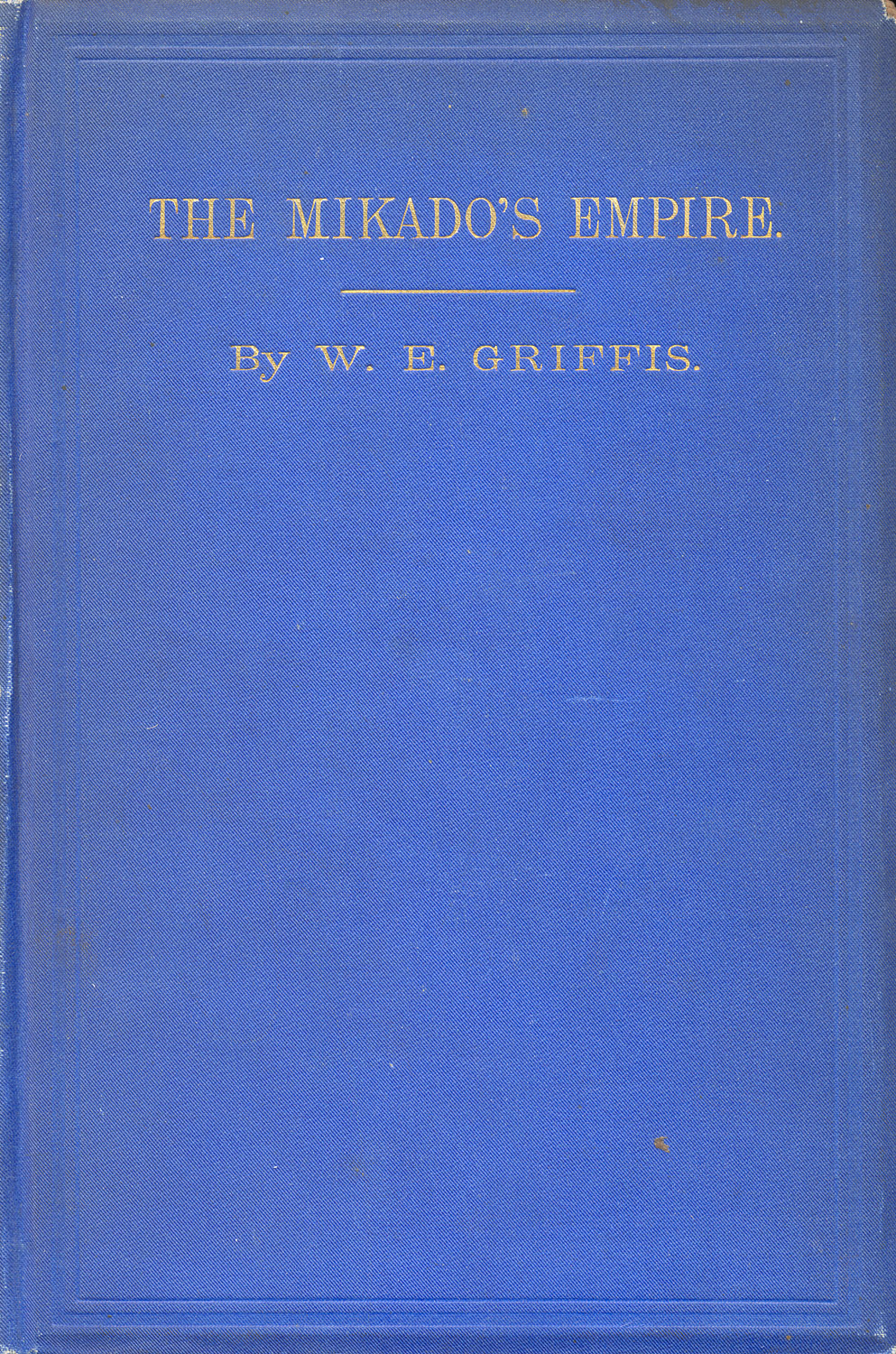

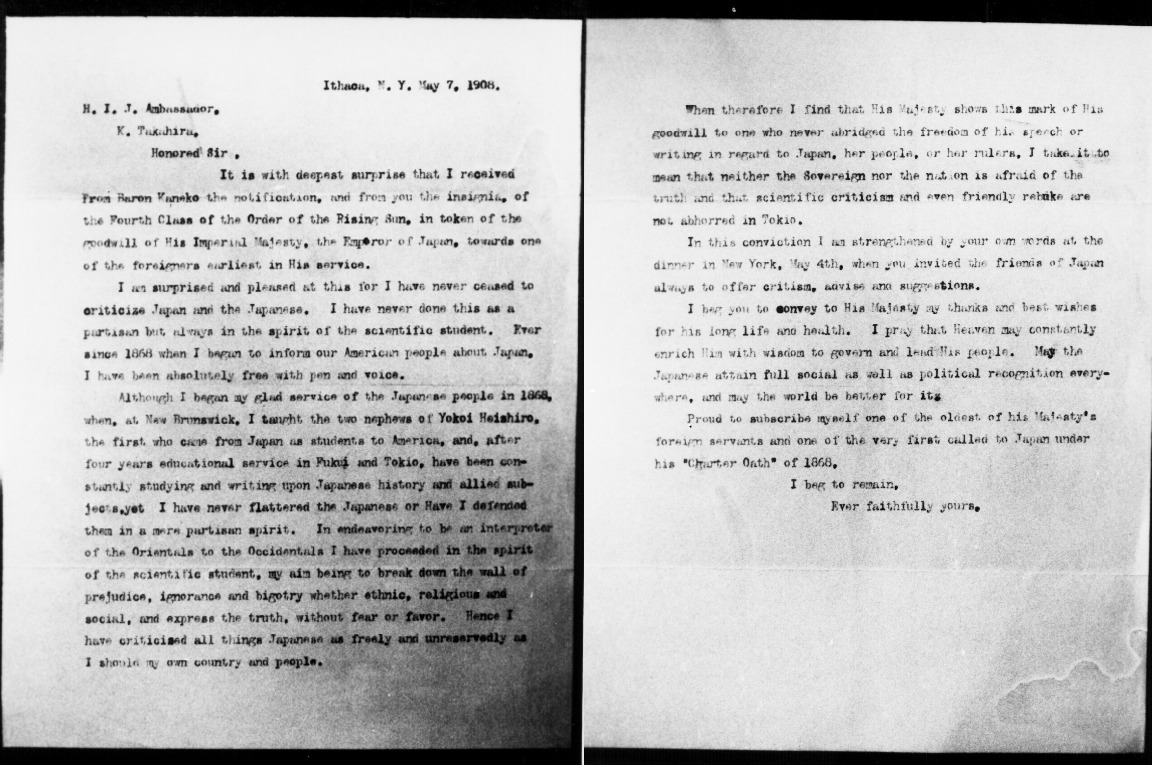
Japan awarded the “Order of the Rising Sun” to Griffis in 1908 for his efforts in educating and modernizing the country diligently for so many years. This letter to Japanese Ambassador Takahira Kogoro was written by Griffis to express his gratitude and happiness from this honor. Interestingly, Griffis acknowledges that his relationship with Japan began in New Brunswick with his tutoring of the Yokoi brothers. He describes himself as the “interpreter of the Orientals to the Occidentals” and expressed his wish to break the barriers between American and Japanese peoples and create understanding.
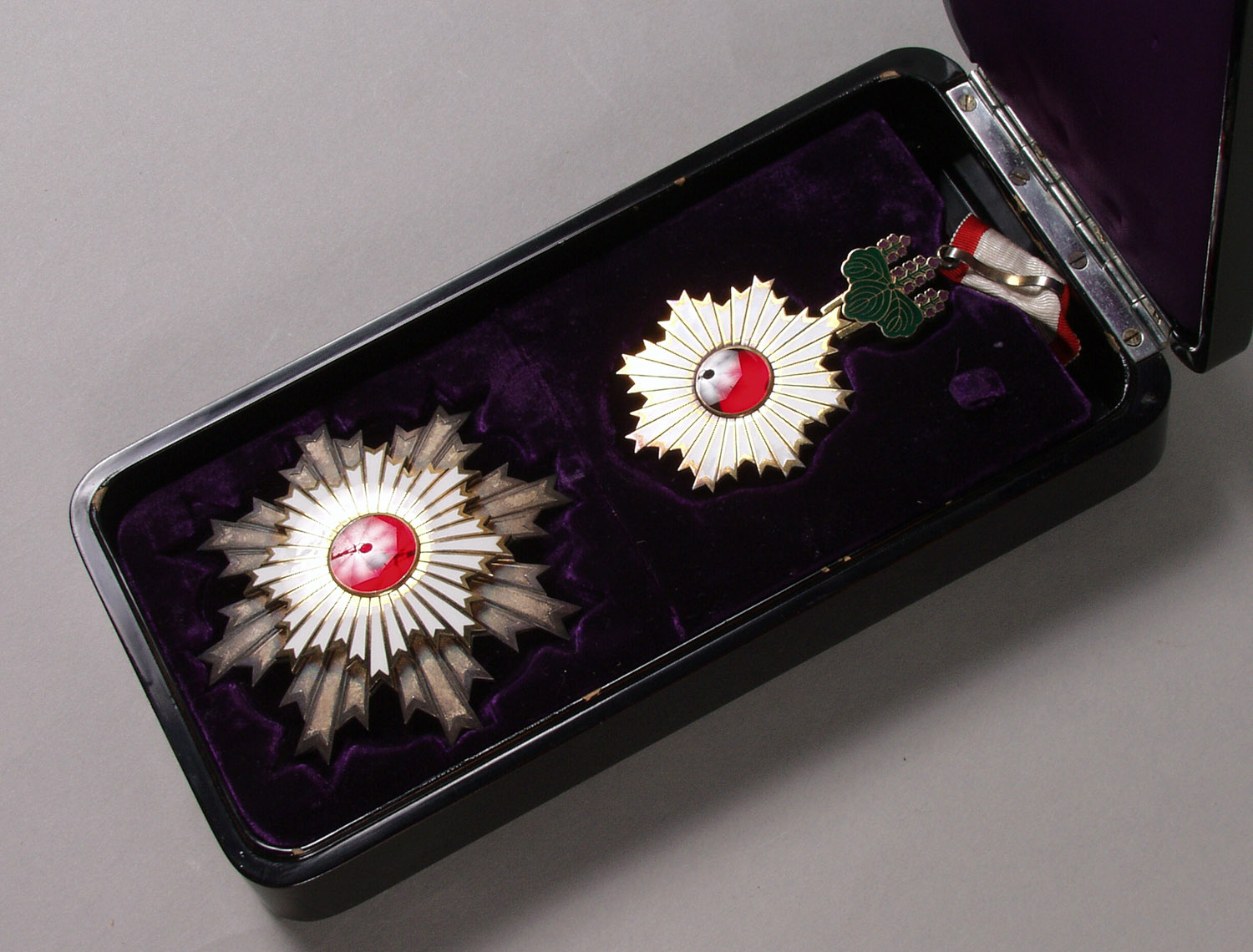
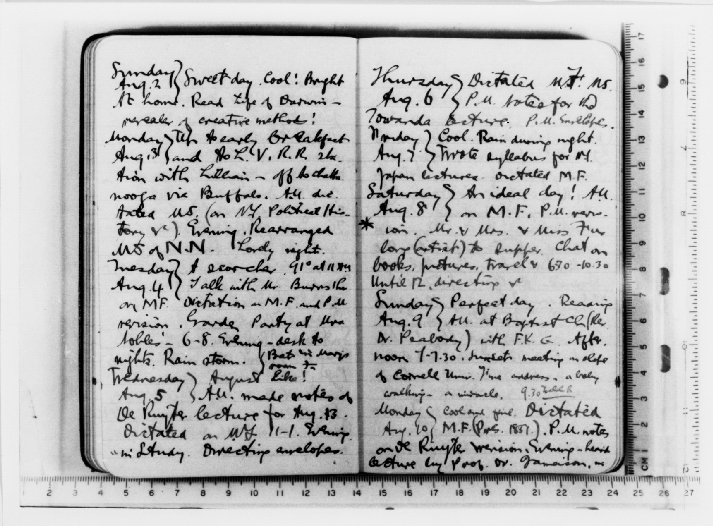
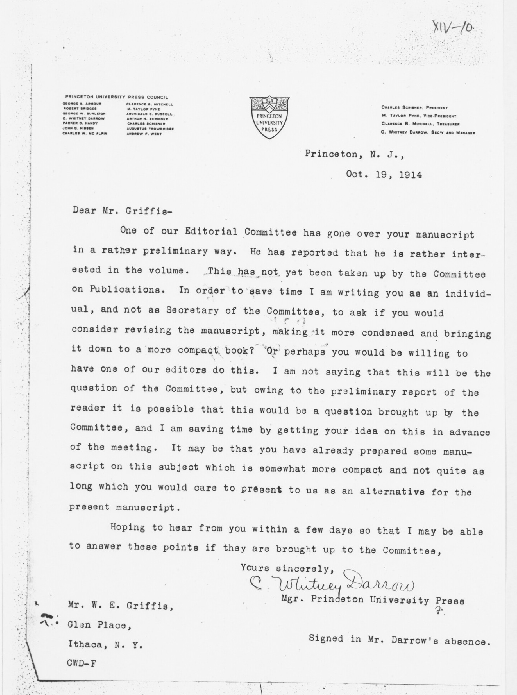
In 1914, following a reading of his manuscript for Griffis’ work C. Whitney Darrow, the secretary of the committee of Princeton University Press wrote a letter to Griffis. He expresses interest in publishing the book, on the condition that Griffis “condenses” the volume to a more comfortable length. He explains that the editorial committee found the material very interesting, but knows that the committee would ask Griffis for this revision anyway. It is possible that this letter is in regards to The Mikado: Institution and Person, a book published in 1915, but this is purely speculation and can not be confirmed.

by Lavanya Attavane (’22)
“William Elliot Griffis.” About|Fukui City Griffis Museum, www.fukui-rekimachi.jp/griffis/abouten.html.
